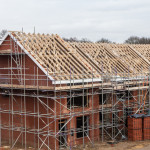News - Construction News
PMI rises for second month

Business activity growth gained momentum across the UK construction sector in April, largely due to solid rates of expansion in the commercial and civil engineering segments.
At 53.0 in April, up from 50.2 in March, the headline S&P Global UK Construction Purchasing Managers’ Index™ (PMI®) registered in positive territory for the second month running and signalled the strongest pace of expansion since February 2023.
Near-term prospects remained relatively positive, as new work increased for the third month running amid reports of a boost to sales from improving domestic economic conditions. Supplier lead times meanwhile shortened to the greatest extent in 2024 so far, which survey respondents linked to rising materials availability and relatively soft demand for construction inputs.
Commercial building (index at 53.9) increased for the first time since August 2023 and was the fastest-growing area of construction activity in April. Survey respondents commented on rising workloads and a turnaround in customer demand, in part driven by refurbishment projects.
Civil engineering activity (index at 53.6) meanwhile expanded again in April and at the strongest pace for nine months. The latest survey signalled a setback for house building activity (index at 47.6). April data pointed to a moderate fall in residential building work, although the rate of decline was the steepest since January.
Demand for construction products and materials softened for the eighth consecutive month in April. Lower input buying was partly attributed to destocking.
Comment Tim Moore, Economics Director at S&P Global Market Intelligence, which compiles the survey said: “The construction sector consolidated its recent return to growth in April, with total industry activity rising at the fastest pace for 14 months amid an ongoing recovery in order books. Demand was boosted by greater confidence regarding the broader UK economic outlook. Commercial construction outperformed in April and civil engineering also provided a solid contribution to overall growth.
“Lacklustre market conditions in the house building segment continued to weigh on activity. The latest survey pointed to the fastest reduction in residential building work since January, although the speed of the downturn remained much softer than in the second half of 2023.
“Hiring trends were subdued in April despite a recovery in workloads, which mirrored trends seen in other part of the UK economy, as construction firms sought to maintain a tight focus on costs against a backdrop of strong wage pressures. Purchasing prices nonetheless increased only modestly in April. An improved balance between supply and demand helped to contain overall input cost inflation, as suggested by the fastest improvement in vendor performance so far in 2024.
“Business activity expectations for the year ahead picked up slightly in April, supported by a sustained recovery in new orders, positive signals for sales pipelines, and anticipated interest rate cuts in the second half of 2024.”
Michael Wynne, director of the sustainable housebuilder Q New Homes, commented: “Housebuilders aren’t just late to the construction industry party. This data suggests they weren’t even invited.
“While activity is surging in both commercial building and infrastructure construction, residential work is stuck in a flat spin.
“Housebuilding activity in April contracted at the fastest rate since January, as many smaller developers – who rely heavily on loans to buy land and fund the building work – postponed their plans.
“Coupled with a planning system which is a hotchpotch at best, and hostile to developers at worst, the high cost of finance means far too many housing schemes are stuck on the drawing board.
“On the demand side, stubbornly high mortgage rates continue to make it hard for first-time buyers to afford a home. At this rate Britain won’t come close to building the homes it needs for years to come.
“However it’s not all doom and gloom. Nearly half of the builders surveyed predict that business will pick up over the next 12 months, encouraged by the prospect of falling interest rates and the possibility of a more pro-building Government after the election.”
Atul Kariya, Head of Construction and Real Estate at MHA, commented: “The rise in construction PMI is in keeping with the activity that we would expect to see at this time of the year. However, the sector has experienced some bumps in the road, but it seems to be turning a corner. Following months of volatility, there are signs that there is some stability returning to the market.
“We are seeing from our clients that there is a sense of firm optimism as we head into the second half of the year and early next with strengthening order books and better cost management. If we do not experience any major setbacks in the next few months, we should expect steady growth this year with a slight uptick next year.”
Related Articles
More News
- Reforms to Building Safety Regulator to accelerate housebuilding
15 Jul 25
Delays to building new high-rise homes will be unblocked through a new package of reforms
- New £39Bn Social and Affordable Homes Programme
14 Jul 25
Hundreds of thousands of social and affordable homes, including 60% for social rent.
- UK Introduces New Trade Measures to Support Steel Sector
11 Jul 25
Steel producers across the UK will benefit from stronger trade measures from 1 July.





